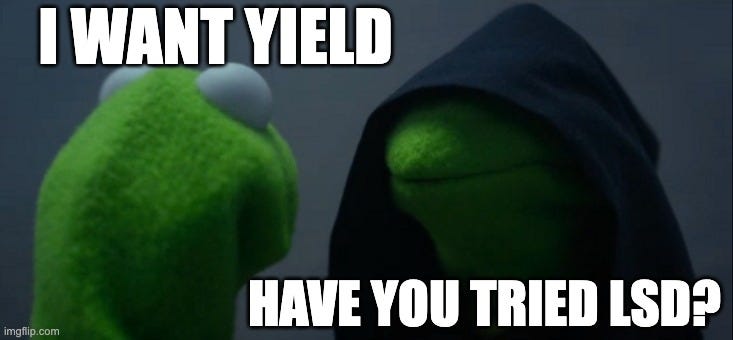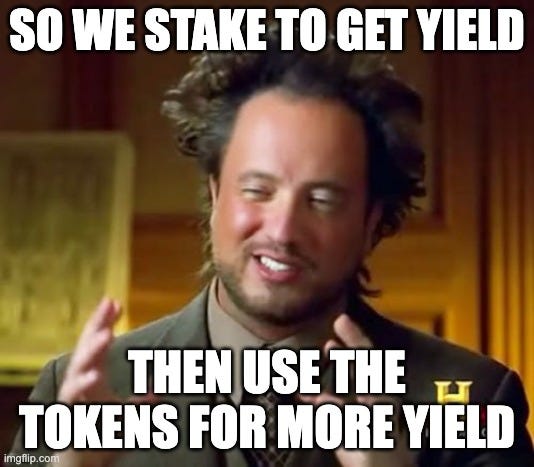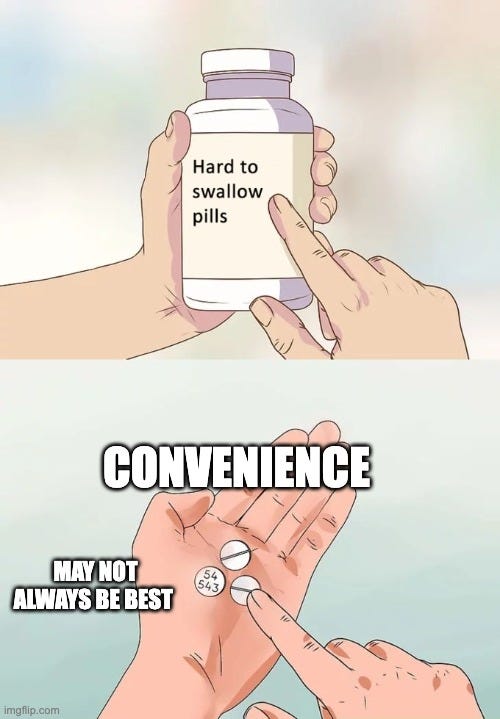Introduction
Staking ETH allows anyone to generate a return, and Liquid Staking Derivatives (LSDs) solve the biggest problem staking had: locking up ETH. LSDs come in different forms, some potentially preferable over others. This write-up explains what LSDs are, how they work, and the differences between the major ones. Enjoy.
Sections
LSD History
How LSDs Work
LSD Providers
Centralized Exchanges
LIDO
Rocketpool
Conclusion
*Thank you to Ziad for proofreading.
LSD History
Many blockchains work by having validators stake currency. Staking involves locking up currency for some time, but being able to redeem it afterwards. It essentially acts as collateral; if a validator does something bad like propose two blocks at once, they’ll lose some of their currency at stake (or be slashed, in other words).
Liquid Staking Derivatives (LSDs) allow staked funds to be liquid and available for other uses. This is done by issuing tokens that represent the ETH being staked. When someone stakes ETH with a LSD provider, they’ll receive (ERC-20) tokens that allow for the redemption of their deposit. Essentially, you can deposit 1 ETH for 1 tokenETH, which can be redeemed for the deposit and some rewards, whether by you or by anyone else.
LSDs existed on other chains before Ethereum, including Kusama/Polkadot for example, where unstaking can involve a 28-day wait period. The reason for LSDs popularity on Ethereum is that until recently, it’s been unclear when withdrawals/unstaking would become possible. Ethereum withdrawals are now confirmed to be coming with the Shanghai upgrade in March and will be covered in more detail in a future write-up.
How LSDs Work
Most LSDs follow the cToken model. When you stake 1 ETH, you’ll receive a token representing your deposit, 1 tokenETH. The deposited ETH is pooled together, and grows as it accumulates rewards. You can redeem your deposit and share of rewards by exchanging tokenETH back for ETH.
In LSD systems, there isn’t a 1:1 ratio between the token and the staked asset. There will always be less of the tokenETH than ETH. As ETH the staked grows with rewards, the amount that can be redeemed with tokenETH does as well. This is the reason why LSD token prices aren’t always the same price that ETH may be at a given time.

The alternative to LSD is staking on ETH and obtaining rewards on that staked ETH periodically. This can be through staking 32 ETH directly, or programs that offer staking but not a token in return. The rewards are paid out in ETH based on the validator’s performance.
For example, staking with Coinbase awards a user with a ~3% yield that is paid in ETH. Alternatively, once you stake with Coinbase you can choose to participate in the LSD and receive cbETH tokens. When you do that, you’ll no longer directly accumulate ETH rewards, you’ll redeem the cbETH for ETH instead for a share of the pools rewards.
LSD Providers
Different LSD providers exist with varying pros and cons. According to Beaconchain, there are as many as 20 staking services to choose from, with up to 7 offering a LSD. Below are the major LSD providers and a quick explanation of each, from most to least centralized.

Centralized Exchanges
There exist centralized exchanges that offer LSDs, these are the most simple solutions but also the most expensive. Centralized exchanges can take up to 30% in fees - that’s 30% of rewards that go to Coinbase before the rest are distributes amongst stakers.
When staking with a centralized exchange, the nodes are operated entirely by their staff. Exchanges including Coinbase use the cToken model. It is worth noting that centralized exchanges required identity verification, or KYC, to exchange the LSD ETH for regular ETH.
LIDO
LIDO is one of the first LSD providers on Ethereum. They allow anyone to stake any amount of ETH and receive stETH in return. ETH is distributed to potential validators that are appointed by the LIDO DAO. LIDO charges 10% of rewards, half goes to validators and the other half goes to a DAO treasury that can be used as needed.
LIDO does not use the cToken model described above. Instead, oracles are selected by the DAO to aggregate the balances of all validators using LIDO ETH. Then, based on whether there is a net increase or decrease, the supply of stETH is adjusted. If a day ends with more rewards, some stETH is issued. If not, some stETH is burned. stETH supply is adjusted this way daily.
Rocket Pool
Rocket Pool has two groups of independent participants, stakers and node operators. Node operators must have at least 16 ETH, and stakers can deposit any amount they’d like. Node operators are complemented with 16 ETH from stakers, which is used to set up a validator node. Node operators take 15% of rewards generated for ETH they stake on behalf of others.
In Rocket Pool’s case, only stakers are given the rETH LSD, not node operators. This means that node operators obtain their yield directly, whereas stakers receive their reward the LSD way: by exchanging rETH for ETH. Rocket Pool’s LSD uses the cToken model.
With the upcoming “Atlas” upgrade, Rocket Pool will allow node operators to participate by depositing 8 ETH instead of the current 16.
In Conclusion
LSDs offer an opportunity to be in two places at once. ETH can accrue yield through staking, and a token equivalent can be used in DeFi to generate additional yield. The flexibility of LSDs make them an attractive option for many stakers getting started. They come at the cost of some reward fees lost, but the benefit is the flexibility and lack of a need to set up a validator node at home.
It is my hope that LSD providers make staking more accessible, but that more people are able (and willing) to set up their own nodes in the future. There is a serious risk in centralized LSD providers having too much of the ETH staked, but they enable participation in staking for many starting out.
** Disclosure: I operate a Rocketpool node.
Thank You & Additional Reading!
Thanks a lot for reading! Here are some more resources if you'd like to dive deeper.
Please like this post and sign up if you haven’t already for more simple write-ups on blockchain concepts.
If you’d like me to cover any topics or have any questions, reach out in the comments!
Stay kind. Stay curious.





